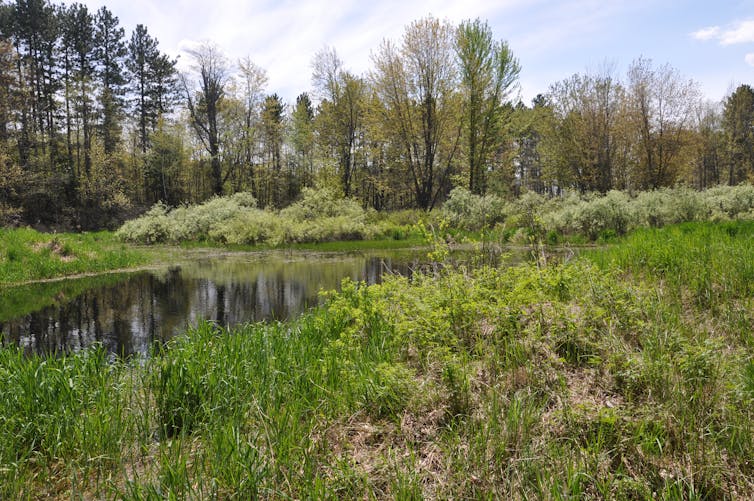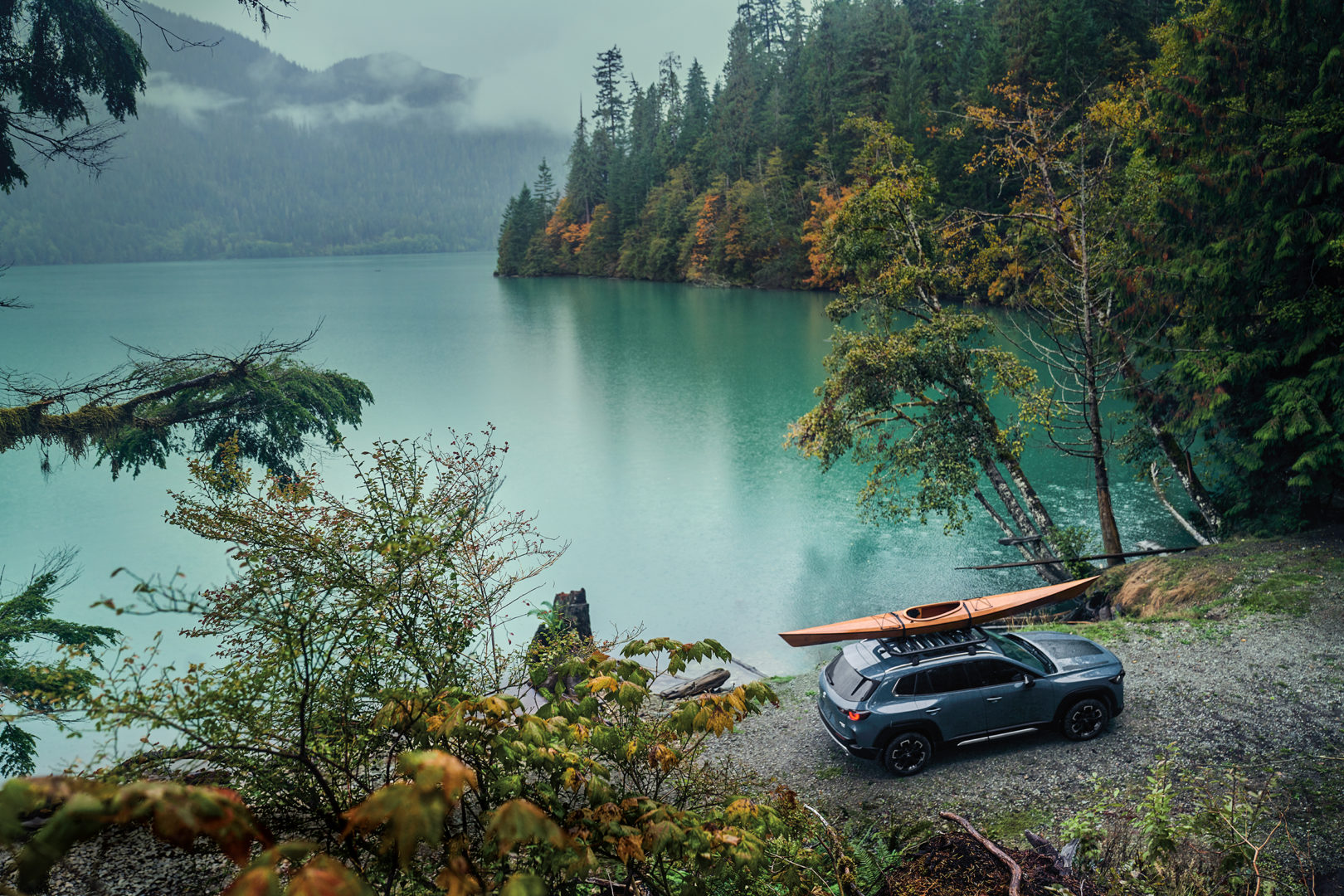There are arguments to be made for the strawberry and raspberry; but in my own gustatory opinion—a bias derived from perhaps five million berries picked and processed—the tiny blueberry, Vaccinium angustifolium, is the queen of small fruit, the singer in the band. Its name alone is simplicity verging on poetry. And its shape is a teensy echo of the planet itself—which, as any spaceman can tell you, is mostly blue.
But it is on the palate, of course, that the little blue prodigy really comes to life. Biting into a mouthful of ripe blueberries is a tactile as well as a taste sensation, each berry releasing its inky, ambrosial load with a subtle pop, followed by a burst of muted tartness, then the inevitable rush of fruit sugar that evolves smartly onto the deeper taste buds, flushing sideways and backwards off the tongue and then down the hatch.
I prefer my berries fresh-picked, straight into the kisser in handfuls, right in the blueberry patch. But I’ll happily eat them from a bowl with milk; on Cheerios, Shreddies, Bran Flakes; stewed (is there anything in the realm of culinary satisfaction quite like the smile of the stewed-blueberry eater?); reduced to jam, jelly, syrup; with ice cream or yoghurt; in pies and puddings; on cheesecake or flan; in pancakes; in muffins. I have devoured them with gusto in chutney, and on salads in the form of blueberry vinegar.
The act of picking berries is, in its own right, a weirdly transcendent experience, a gateway both to wisdom and to idiocy. No emotion is quite comparable, for instance, to the hateful, delicious masochism of carrying on too long—say, into the fifth or sixth hour; the head aching from too much sun; the retinas imprinted with blue-dot psychedelia that will pursue you into the twitchy dreams of the wee hours; and the knees, the hips, the back, each by this time a manifest inkling of the galloping arthritis that will eventually catch up with you. And yet you keep on picking because there are still blueberries to be had, and as yet no one is showing clinical signs of having dropped dead.
How to pick this summer’s best wild blueberries
Similarly, what can compare to the hopeful, agonizing self-delusion that, perhaps, if you don’t look at your basket or pail as you drop in the blueberries, or if you pick them into a cup and dump the cup as it fills, your basket will somehow be tricked into filling more quickly?
Or to the sensory vocabulary of the patch itself: the varying desiccation and swamp; the moss, rock, and lichen; the snapping pungency of the dry-wire twigs being consumed by the cook fire; or the redeeming cool of the lake.
Or farther north, the furrowed forest-cuts left by the pulp-and-timber workers (prime ground for blueberries); the ubiquitous black spruce; the Precambrian ravens and rock.
My great-grandmother, a 4½-ft. tigress, thought nothing of putting up 70 or 80 quarts in late July. She stewed them in their own juices—no added water—because this was how it was done. I’ve been told that she once emerged onto the cottage porch at Clear Lake, carrying a quart sealer of freshly stewed berries. As she held them up for the family’s inspection, declaring proudly that they contained “not one drop of water,” the bottom fell out of the jar, and the berries hit the porch floor.
As kids during the ’50s and early ’60s we picked in the mossy uplands near the Connell railway siding at Torrance, Ont., a few kilometres south of Bala. The horrormeister, David Cronenberg, shot the final scenes of his movie Naked Lunch on the site. All I could think about while watching the scenes was blueberries.
It might please Cronenberg that, during the mid-’50s at Connell siding, I found a heavy metallic something—military green in colour and about the size and shape of a cucumber. I showed it to my mother who, believing it to be an unexploded mortar shell, ordered me to lay it gently on the nearby moss. It may still be there.
The berries, like the prospects for the future, were good during the ’50s. On most trips we’d come home with at least a six-quart basket filled. Some days, my dad would pick a basketful himself. If there was a deficiency to his efforts, it was that he didn’t “pick clean,” and that the time he saved in not separating the stems and leaves from his pickings had to be made up later by my mother, who did it for him. My mother, I might add, once stared down a rattlesnake in the blueberry lands northwest of Gravenhurst, Ont.
8 facts you may not know about blueberries
I had no comparisons for the seemingly bountiful harvests of those early years, until 1991, when I moved with my family to Thunder Bay. Last summer, my wife and five-year-old and I picked 12 six-quart baskets in the timber clearings out along the Armstrong Highway north of the Lakehead. An acquaintance of mine and his family picked a hundred baskets in two days near Ignace, Ont. Bring on Cronenberg.
Our own picking left my favourite jeans permanently stained in the knees, my fingers a fragrant ghoulish purple. My wife, who was six months pregnant at the time, sat like Buddha amid the bushes, and slept like him on the back seat of the van as she felt the need.
The operative word for good berries in these parts is “lovely.” Exceptional berries are “as big as grapes.” It is pleasingly symmetrical that the grapes grown north of Superior—the lovingly tended few that make it to maturity—are the size of blueberries.
When the berries are particularly plentiful—20 or 30 to a clump—pickers speak of “milking” them from the bushes…as we never could in Muskoka.
A local friend picks with a blueberry rake, an ingenious comb-like contraption with a litre-sized reservoir that traps the berries while allowing the twigs, leaves, and pipsqueaks to fall through. You can buy such an implement, hand-made from sheet metal and soldier, for $35 at Lauri’s Hardware, a Finnish institution on Bay St. in Thunder Bay. Lauri himself told me that, at the current price of berries, a rake would pay for itself in one trip to the patch. I believed it, but didn’t buy one—perhaps because, for me, the pleasure of picking is only marginally connected to the number of basketfuls I bring home. Certainly, I have little patience for people who say they wouldn’t waste their time scrambling around in the wilderness—not to mention wasting gas on the highway—when they can buy a basket of berries for $20 (around here). You can buy all the elements in the human body for $13 from a chemical-supply catalogue. But it just ain’t the same.
In my own arcane world, the only reason for buying blueberries would be that you couldn’t get them any other way. And, of course, sometimes you can’t—even if you spend your summers in areas where they grow. Because sometimes they don’t grow. I have heard seasoned pickers expound ad tedium on the whys and wherefores of good and bad blueberry years. A good year starts with a warm spring, followed by a wet June and a sunny July. Or was it a dry June and a wet July? Too much rain kills ‘em dead. Or too much sun. A late frost can apparently do them in. And if there are no bees around, the plants don’t get pollinated.
Whatever else is known about their comings and goings, a few things are certain: blueberries will inhabit an area for several decades, then disappear and show up somewhere else. Sometimes they return to an area where they were once plentiful. Clearing a patch of forest will often bring berries. A forest fire, too, will bring them on. Blueberries are one of the first plants to regenerate in the scorched soil. They like their soil acidic.
If you don’t find berries where you hoped to, look somewhere else. Ask other pickers. A boom year at Huntsville or Parry Sound can be a bust at Sudbury or Connell siding. And remember that no matter what the prevailing conditions in an area, there will be microhabitats that experience nothing of the rain, drought, frost, bees, or fire that affect the territory at large.
As a rule, a relatively mild spring, followed by a good mix of rain and sun, tends to produce berries.
But aspiring pickers should not be confused, much less impressed, by any of this pseudo-scientific speculation. A good year is not one in which the rains or sun or frost come in textbook proportions at precisely the right time; or the berries are as big as grapes or grapefruits; or can be milked off the bushes by couch potatoes.
As much as any food on God’s menu, I love blueberries. But given a choice between the berries and the berry patch, I’ll always take the patch, with its implied freedoms, its wilderness and wildlife. In fact, at the risk of uttering a pomposity, I submit that a good year for blueberries is one in which you enjoy the patch as much as the berries—and perhaps have the good fortune to fill your baskets.
A really good year is one in which you really enjoy the patch…and get to eat blueberries on cereal and ice cream—and in pies and pancakes and muffins—for weeks if not months to come.
Originally published in the July/August 1994 issue of Cottage Life.














